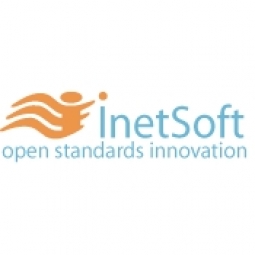公司规模
Large Corporate
地区
- America
国家
- United States
产品
- eScholar VISTA Reporting
- InetSoft Style Intelligence
技术栈
- Java
- Web-based software
实施规模
- Enterprise-wide Deployment
影响指标
- Productivity Improvements
- Digital Expertise
技术
- 应用基础设施与中间件 - 数据交换与集成
适用行业
- 教育
适用功能
- 商业运营
服务
- 系统集成
关于客户
eScholar 致力于通过为教育工作者提供最有效的数据管理工具来改善教育,致力于提供一个集成数据的通用平台,以支持最佳的分析能力,从而改善儿童教育。诸如“不让一个孩子掉队”等倡议有重要的报告要求。收集了大量有关学生、教师和表现的原始数据。然而,仅仅收集和存储数据并不能使数据有用。如果没有一个将一个元素与另一个元素匹配的结构,这一新的数据海洋将无人使用,生产性变革的机会也可能会丧失。
挑战
eScholar 提供解决方案,用于收集、清理、识别、分析和报告教育工作者需要的数据,以跟踪和提高复杂的儿童教育事业的绩效。eScholar 系统中的所有数据元素都以最精细或最低的详细程度进行维护,并且可以在任何数据类别或域中无限期地存储纵向历史记录。eScholar 必须整合所有这些数据,无论其来源如何。因此,学区收集的与个别学生表现相关的每项事实都与该学生有关。eScholar 对其报告解决方案有几个强制性要求。首先,它需要提供一个易于使用的自助服务环境,使具有各种技术技能水平的用户能够访问和报告他们的信息。其次,它需要是一种低维护解决方案,可以与各种 IT 基础设施无缝集成,并且不会因应用程序下载、插件或升级而影响学区。它需要灵活、易于管理的安全性,并且对于只有几个用户的学校以及分布广泛的信息系统环境中拥有数万名用户的地区来说,价格都必须是可以承受的。在评估了许多供应商解决方案以及当今可用的开源产品之后,eScholar 选择了 InetSoft。
解决方案
eScholar 现在使用 InetSoft 的 Style Intelligence™ BI 技术。InetSoft 的 100% Java 基于 Web 的软件具有用户友好的界面和基于角色的安全性,这是 eScholar 客户(包括学校董事会高管、学校管理员和教职员工)所需要的。eScholar 选择 InetSoft Style Intelligence 作为其 eScholar VISTA Reporting™ 产品的首选报告解决方案。这款易于使用的软件非常适合 eScholar 客户,因为它的点击和选择、拖放用户界面对于各种用户来说都非常直观。由于它是基于 Web 和零客户端的,因此升级是无缝的,不会对其用户社区产生任何影响或不兼容问题。该软件灵活的 Java 平台使 eScholar 能够轻松地将 InetSoft 的基于角色的安全性与每个客户的个人安全基础设施集成。基于角色的安全性使系统管理员能够轻松控制对共享、公共和私人信息和报告的访问。最后,InetSoft 提供了广泛的许可选项,使所有规模的客户都可以轻松负担得起该产品。
运营影响

Case Study missing?
Start adding your own!
Register with your work email and create a new case study profile for your business.
相关案例.

Case Study
Revolutionizing Medical Training in India: GSL Smart Lab and the LAP Mentor
The GSL SMART Lab, a collective effort of the GSL College of Medicine and the GSL College of Nursing and Health Science, was facing a challenge in providing superior training to healthcare professionals. As clinical medicine was becoming more focused on patient safety and quality of care, the need for medical simulation to bridge the educational gap between the classroom and the clinical environment was becoming increasingly apparent. Dr. Sandeep Ganni, the director of the GSL SMART Lab, envisioned a world-class surgical and medical training center where physicians and healthcare professionals could learn skills through simulation training. He was looking for different simulators for different specialties to provide both basic and advanced simulation training. For laparoscopic surgery, he was interested in a high fidelity simulator that could provide basic surgical and suturing skills training for international accreditation as well as specific hands-on training in complex laparoscopic procedures for practicing physicians in India.

Case Study
IoT platform Enables Safety Solutions for U.S. School Districts
Designed to alert drivers when schoolchildren are present, especially in low-visibility conditions, school-zone flasher signals are typically updated manually at each school. The switching is based on the school calendar and manually changed when an unexpected early dismissal occurs, as in the case of a weather-event altering the normal schedule. The process to reprogram the flashers requires a significant effort by school district personnel to implement due to the large number of warning flashers installed across an entire school district.

Case Study
Implementing Robotic Surgery Training Simulator for Enhanced Surgical Proficiency
Fundacio Puigvert, a leading European medical center specializing in Urology, Nephrology, and Andrology, faced a significant challenge in training its surgical residents. The institution recognized the need for a more standardized and comprehensive training curriculum, particularly in the area of robotic surgery. The challenge was underscored by two independent studies showing that less than 5% of residents in Italian and German residency programs could perform major or complex procedures by the end of their residency. The institution sought to establish a virtual reality simulation lab that would include endourological, laparoscopic, and robotic platforms. However, they needed a simulator that could replicate both the hardware and software of the robotic Da Vinci console used in the operating room, without being connected to the actual physical console. They also required a system that could provide both basic and advanced simulation training, and a metrics system to assess the proficiency of the trainees before they performed surgical procedures in the operating theater.

Case Study
Edinburgh Napier University streamlines long-distance learning with Cisco WebEX
• Geographically dispersed campus made in-person meetings costly and inconvenient.• Distance-learning programs in Malaysia, India, and China required dependable, user-friendly online tools to maximize interaction in collaborative workspaces.• Virtual learning environment required a separate sign-in process, resulting in a significant administrative burden for IT staff and limited adoption of collaboration technology.

Case Study
8x increased productivity with VKS
Before VKS, a teacher would spend a lot of time showing a group of 22 students how to build a set of stairs within a semester of 120 hours. Along with not leaving the teacher much time to provide one-on-one support for each student to properly learn carpentry, it also left a considerable amount of room for error. Key information would be misinterpreted or lost as the class was taught in the typical show-and-tell way.

Case Study
Scalable IoT Empowering GreenFlex's Sustainable Growth
GreenFlex, a company that supports sustainable development, decarbonization, and energy efficiency, faced several challenges in its quest to expand its business. The company needed to deploy a robust and sustainable IoT technology to support its growth. It was crucial for them to monitor and control devices at customer sites in a safe and reliable manner. They also needed to integrate devices across a range of communication protocols and gather and act on data to meet efficiency targets. GreenFlex had previously built IoT capabilities into its digital platform, GreenFlexIQ, to monitor and manage customer sites remotely. However, they soon realized that they needed a new platform to support their ambitions. They needed a platform that could scale to connect more devices for production management and make it easier for the operations team to manage devices in the field.







